For those who know how to ice skate, it’s one of the most fun and exhilarating ways to get exercise. But for many others it’s a strange, even alien physical activity that poses a huge learning curve and keeps them from enjoying a lot of ice sports, from hockey to figure skating.
But don’t let that steep learning curve keep you from giving ice skating a try. Ask anyone who’s put in the time and energy needed to learn how to skate: it’s definitely worth it. The key is to remain patient and to give some of the following strategies careful consideration…
1. Focus on What’s Ahead
One of the biggest mistakes new ice skaters make is focusing too much attention on what their feet are doing. And while it’s true that the feet do a lot of work in the skating process, concentrating on what they’re doing will do a few problematic things: first, it will cause you to lose focus on what’s ahead of you, potentially leading to an ugly spill. Second, it could cause you to lean over to the point where you lose balance and tumble forward.
Although it can be tough to remember this, try to keep your head back and your eyes straight ahead. Trust your instinct to help you move your feet in the right direction.
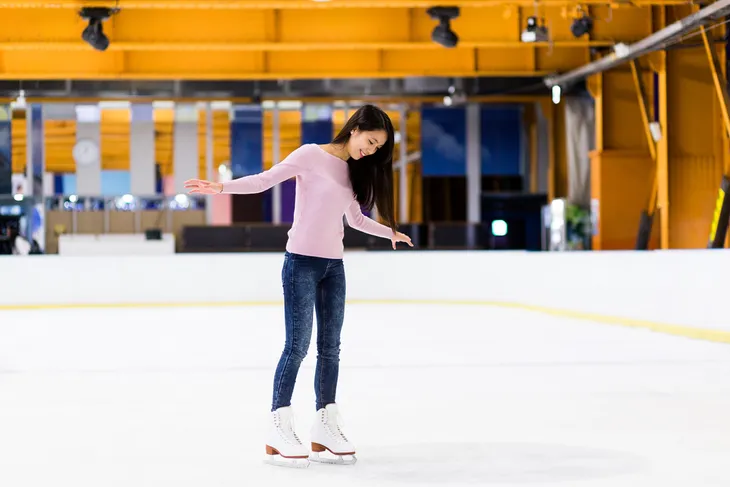
2. Don’t Cheap Out on Skates
When it comes to ice skating, you’re only as good as your skates. If you cheap out and buy the budget brand at the local hardware store, you may come to regret it. Cheaper skates tend to be heavier where it hurts and will be more likely to leave your feet feeling sore and swollen. They can also be a lot harder to “break in” than a higher quality skate.
For that reason, if money’s an issue (and let’s face it, it usually is), consider buying used skates instead of new ones. That will allow you to purchase a better quality skate and, potentially, a skate that’s already been broken in.
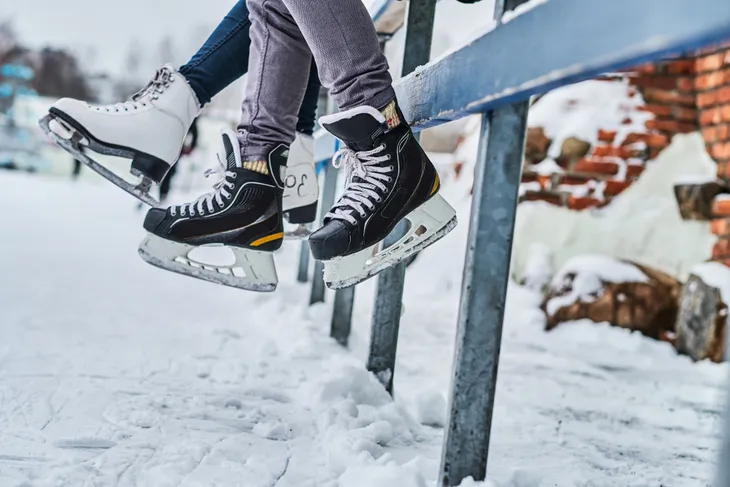
3. Tie Your Skates Right
Tying up your ice skates isn’t quite like tying your shoes. In the case of ice skates, it’s imperative that they’re tied in a way that fits your feet. Ideally, they’ll be quite snug around your feet. Additionally, many skates—and especially hockey skates—will have a section that wraps around the lower part of your calf, which means you may need to wrap this part with your skates’ laces.
It’s also worth keeping in mind that figure skates and hockey skates tend to be tied in a different way. To be clear on how you should tie your own skates, talk to someone with some expertise in this area. Additionally, don’t hesitate to try tightening or loosening your skates, especially if your feet or ankles feel sore.
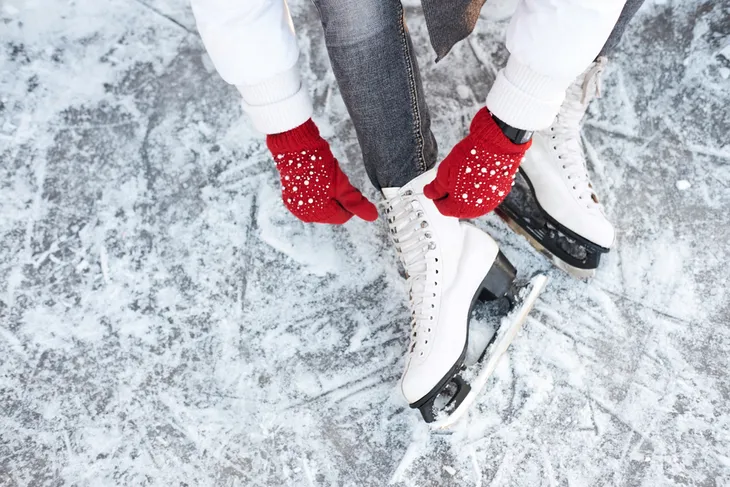
4. Take Your Time
Rome wasn’t built in a day. Learning to skate can also take time, so don’t throw a tantrum if it takes more than an hour to become the next Wayne Gretzky.
At the same time, try to avoid hitting the ice at full steam, even if this isn’t the first time you’ve tried skating. The slower you take it, the more you’ll learn the nuances of how to shift your feet in a way that will help effectively propel you across the ice. On top of that, taking it slowly will help you come to a safe stop—a huge challenge for skaters at the beginner level.
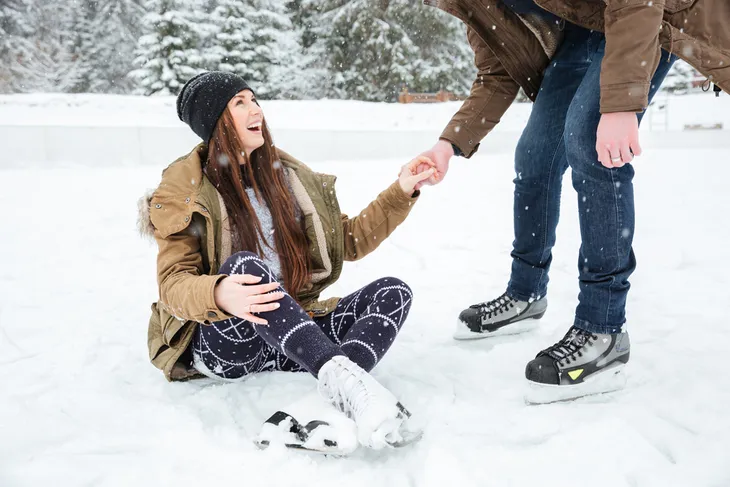
5. Talk to an Expert
When people try golfing for the first time, they often consult an expert to learn more about their swing and how to properly use their equipment. So, why wouldn’t you do the same when learning to skate?
It doesn’t matter if you’re young or old—an expert can help you with both the basics (like how to properly tie your skates) and more advanced techniques (such as performing “cross-overs” when taking corners). An expert can also help you identify your skating strengths and weaknesses, giving you an idea of what you can do on and off the ice to improve your speed and overall movement.
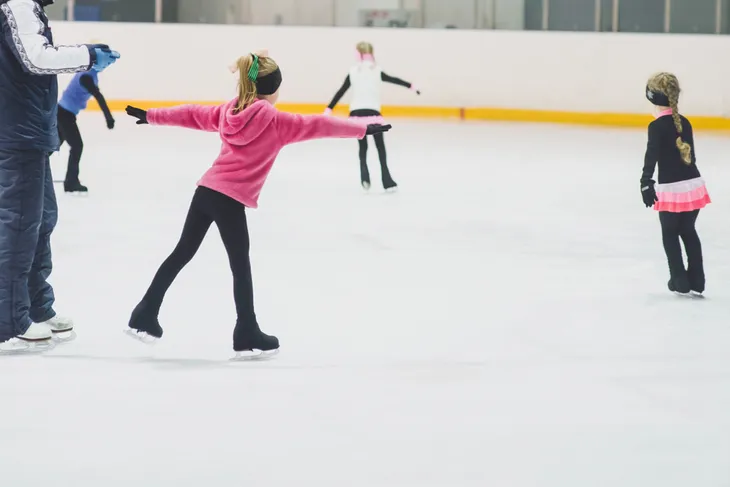
6. Learn to Stop Properly
Those new to ice skating tend to want to, above all else, learn how to skate fast. But there’s no point in learning to skate swiftly if you don’t know how to come to a stop in a safe and effective way; in fact, it could lead you head-first into the boards, leaving you with a significant injury (and a serious aversion to hitting the ice ever again).
When you first hit the ice, take things slow and focus on stopping gradually by bringing your two big toes together. However, as you build speed it’s important that you learn to stop in a different (and far more effective) way, and that means turning your feet to the side, effectively halting your momentum. It’s a tricky maneuver that can take time and lead to a few bumps and bruises, but in the long run it will help you become a better skater.

7. Watch for Free Ice Time
Many communities, and especially those in colder climates, have public skating programs that drastically reduce or even eliminate fees for ice time. This offers an excellent way to learn to skate and get in a great workout for less money.
For this reason, take some time to contact the arenas and skating rinks in your area to ask about skating programs with reduced fees. You may be pleasantly surprised at how taking just a few minutes to place a few phone calls can help you learn to skate on a very reasonable budget.
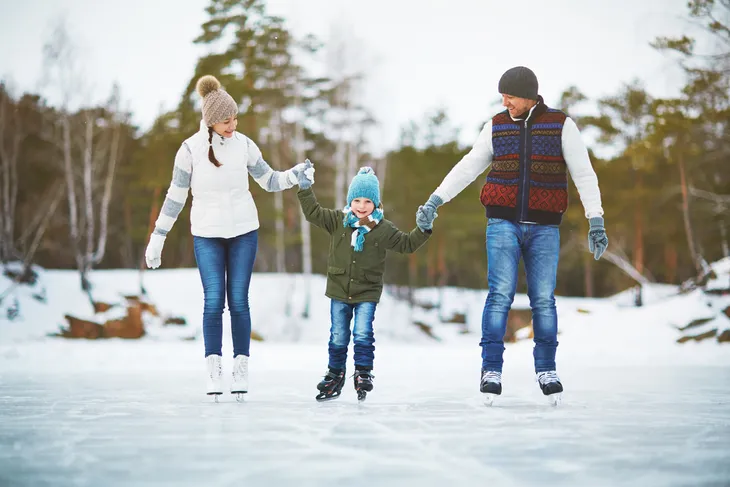
8. Explore Off-Ice Exercises
Chances are you’d be surprised at how much time professional hockey players and figure skaters spend exercising off the ice. Truth is, there are many different types of exercises that help build the muscles that play an integral role in skating, and few of these exercises require one to be on the ice or in an arena.
Some of these exercises include lateral jumps—which simulate the back-and-forth, side-to-side movement of skating rapidly, and jumping squats, which help build many of the same muscles used in the skating process. It’s also worth noting that intense cardiovascular activities, such as running, swimming, and cycling, can help improve physical endurance and will visibly benefit anyone keen on improving their skating.
